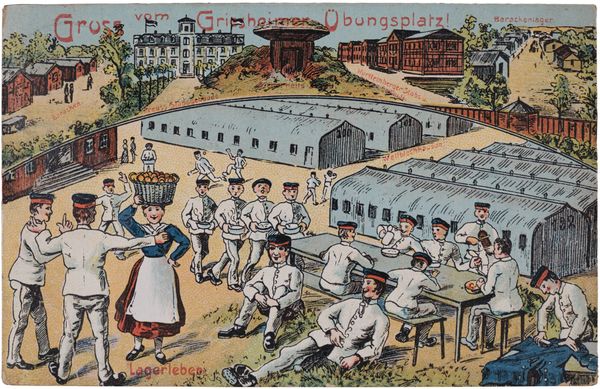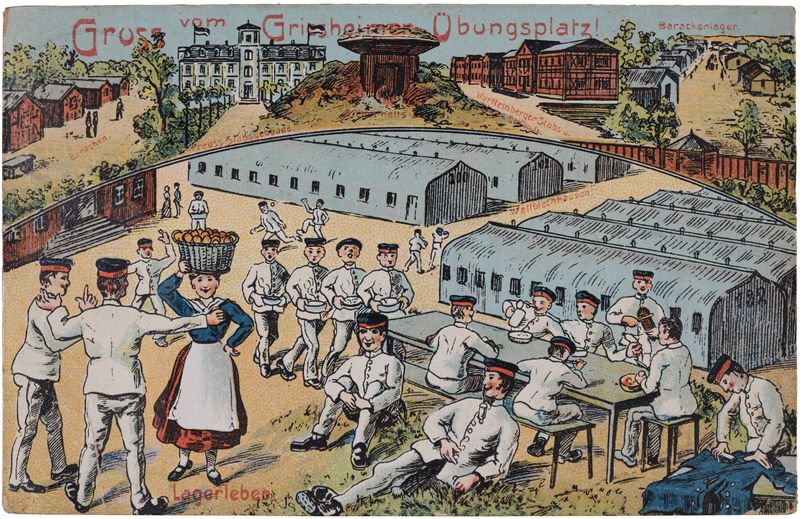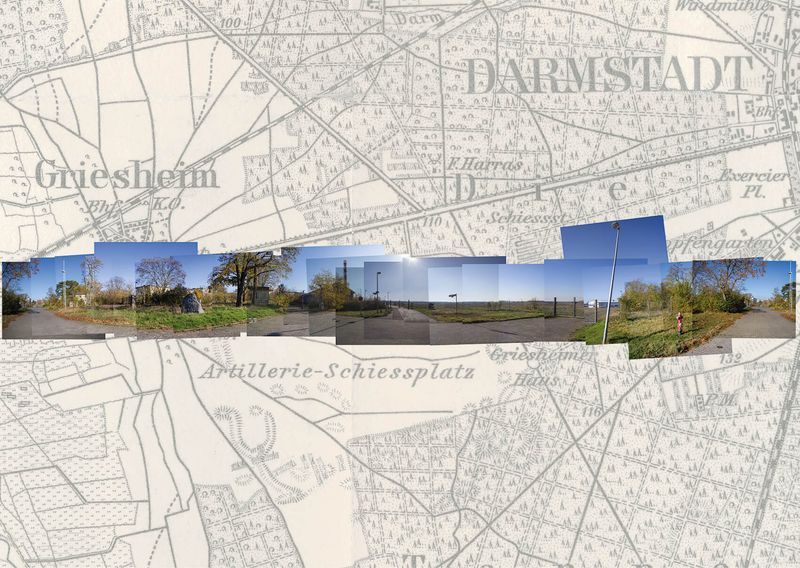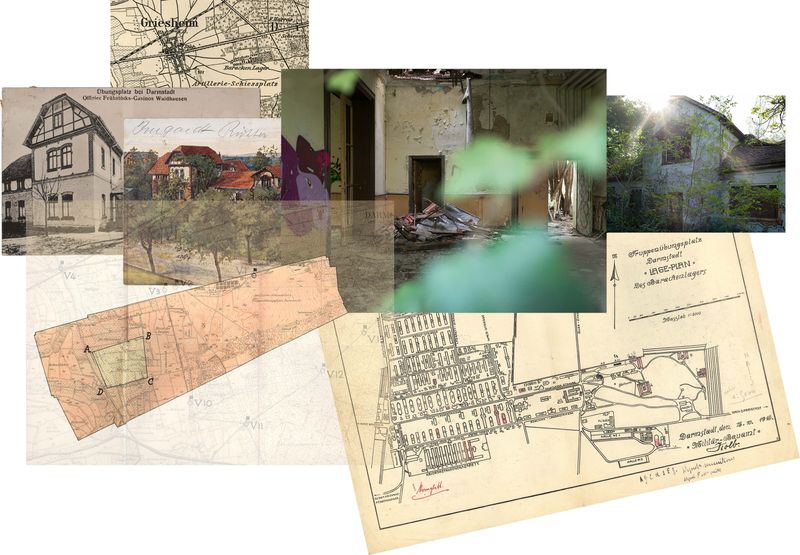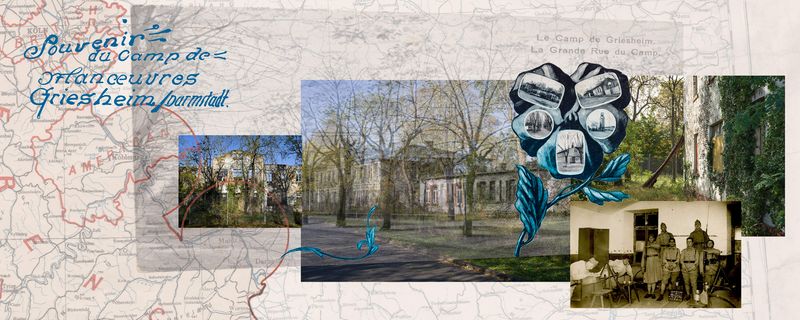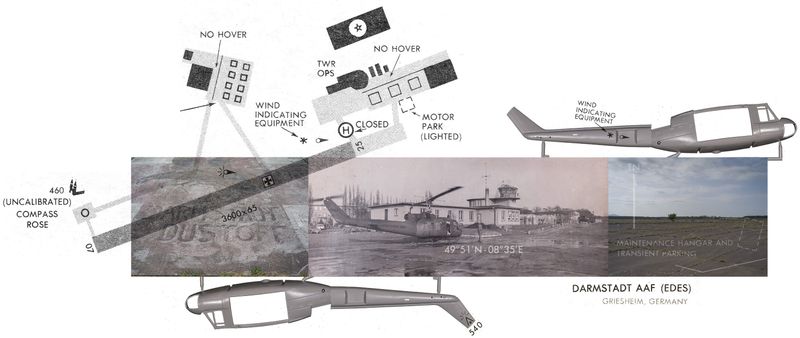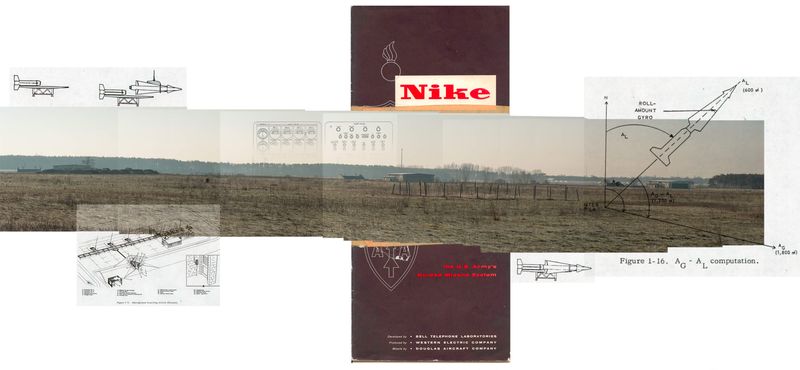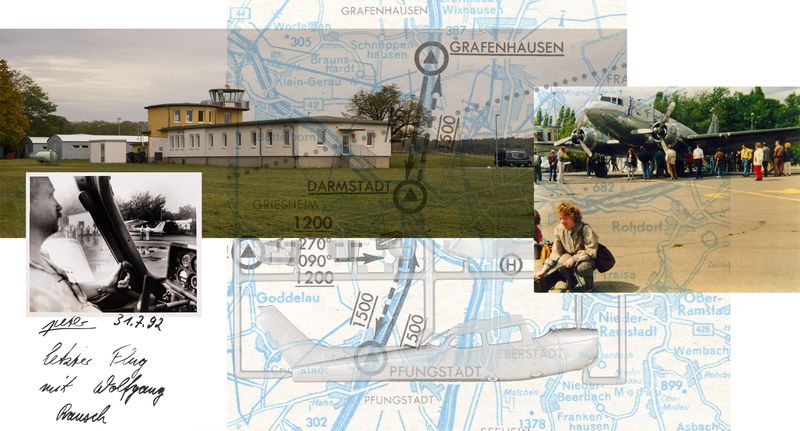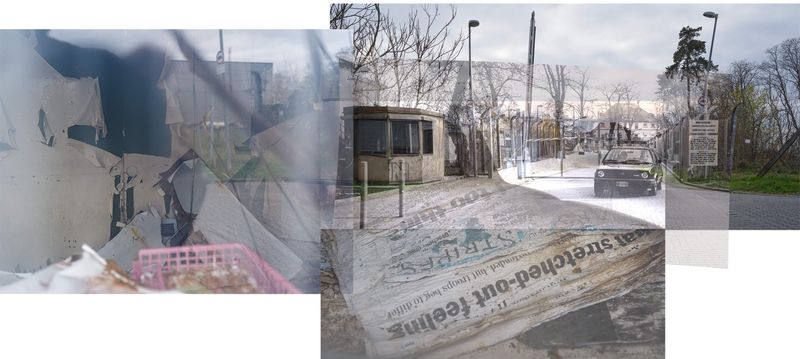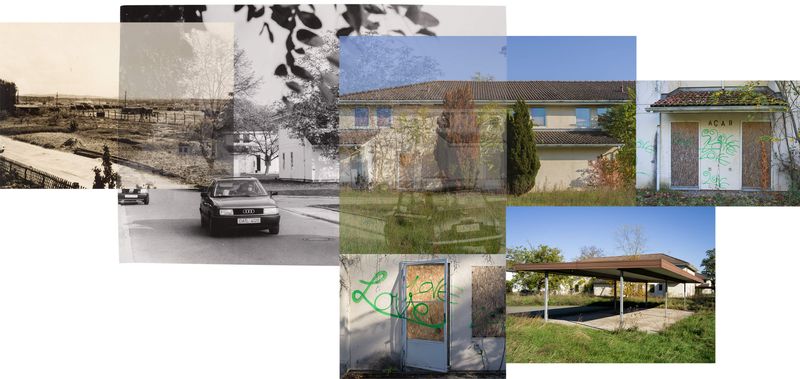Greetings from the Parade Ground
-
Dates2020 - Ongoing
-
Author
- Location Griesheim, Germany
»Greetings from the Parade Ground« is a portfolio about my neighbourhood. Here, I discovered the post-military landscapes that triggered my interest in learning about their history.
In the 19th century, the area was described as »low quality agricultural land«, a sand-dune terrain. From 1855, German, French and American military units used it until 1992. Also closely linked to it is the development of German aviation history. In 1908, August Euler leased a part of the parade ground as a site for flight tests and aircraft construction. With this, Germanys oldest airfield is located close to me.
Today, the area is in a change. The buildings are abandoned and decay. Since 1996, the former airfield is a natural reserve and used for scientific research by Darmstadt's university.
Simon Critchley writes, that »the city is a spatial network of memory traces, but also a vast predictive machine«. The abandoned military buildings are the traces of the armies that acted here. Their decay indicates a change of the place soon. I try to capture the visible traces as long as possible, research their history, and show the result in this composite landscapes.
I could say that I am building my own memory theater. I have to cite Critchley again when he writes »With the association of memory with locus and location, the idea of a memory house, a memory place, or a memory theater was born« (Simon Critchley).
What fascinates me is that so many world history events have been mirrored here and have left their mark. Here, on the periphery of a small town south of Frankfurt.
This portfolio is a continuation of my project »The Paprika Village«. In this, I started to explore my neighbourhood and gave an overview of its evolution. Here I visualised the, for me, shaping factors military, politics, religion and agriculture. In »Greetings from the Parade Ground« I concentrate on the military aspect.
